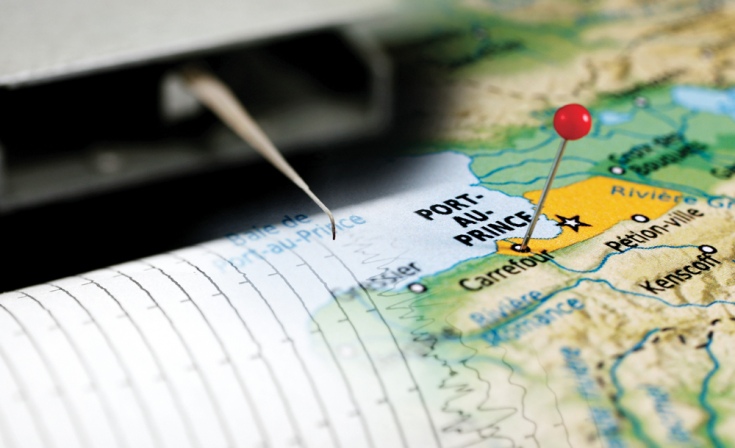
What’s at Fault?
Professors co-author study disputing source of devastating 2010 Haiti earthquake
Spring 2011 · Comment ·
The cause of last year’s earthquake in Haiti may not be what scientists previously believed. If two UT Arlington professors are right, the region remains under seismic threat.
A study co-written by College of Science Dean Pamela Jansma, earth and environmental sciences Professor Glen Mattioli, and scientists at several other universities concludes that the previously unmapped Léogâne fault—not the Enriquillo-Plantain Garden fault, as first believed—caused the massive Jan. 12, 2010, temblor.
Eric Calais, Purdue University professor of earth and atmospheric sciences, led the research team, which included experts from the University of Miami and institutions in Saudi Arabia and Haiti. Drs. Calais, Jansma, and Mattioli have worked together since the mid-1990s and obtained some of their data from a joint 2004 National Science Foundation-funded study of surface deformation and seismic activity in Hispaniola.
The researchers found that instead of moving the ground east to west, as they believed a quake from the Enriquillo-Plantain Garden fault would, the 2010 earthquake actually moved the ground toward the fault and upward, causing shortening of the ground surface in the region near the quake. Those measurements, along with data about the location of the earthquake and its aftershocks, suggest that a rupture of the Enriquillo-Plantain Garden fault had not occurred, Mattioli explains.
And that means the Enriquillo still poses a risk.
“Preliminary measurements indicate that the Enriquillo fault did not release any accumulated seismic energy and, therefore, remains a significant threat for Haiti, and Port-au-Prince in particular,” Calais says.
He adds that the “inexorable” earthquake risk in Haiti should spur measures to adapt to earthquake hazards and save lives.




















